 Overview
Overview
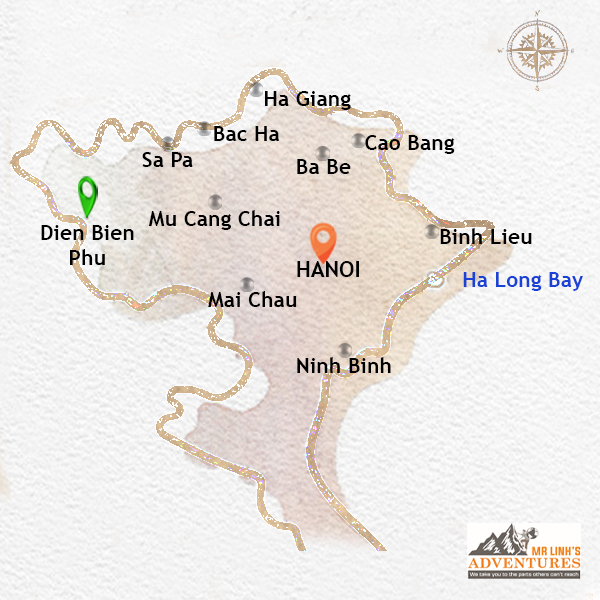 Dien Bien Phu,
Dien Bien Phu, nestled in a vast green basin in northwestern Vietnam, is a destination steeped in history. More than just a geographical location, Dien Bien Phu resonates as a symbol of Vietnam's struggle for independence.
Today, the city is opening up to tourism, offering visitors a moving immersion into the past while revealing the natural beauty and cultural richness of the region. It is an invitation to adventure, discovery, and sharing, following in the footsteps of a poignant past.
 Top Attractions
Top Attractions
Dien Bien Phu, a name that resonates strongly in the history of Vietnam and the world. More than just a geographical location, it is a symbol of courage, resilience and the struggle for independence. Visiting Dien Bien Phu is like diving into the heart of an epic battle that marked a turning point in decolonization.
The Victory Museum in Dien Bien Phu
Begin your journey at the Dien Bien Phu Victory Museum. It’s not just a museum, it’s a living story of the battle. Through artifacts, photographs and reconstructions, you will be transported back in time, reliving the key moments of this confrontation. You will understand the strategic ingenuity, immense sacrifice and determination that led to the Vietnamese victory. This museum offers an essential historical perspective to understand the importance of this place, far beyond the raw facts.
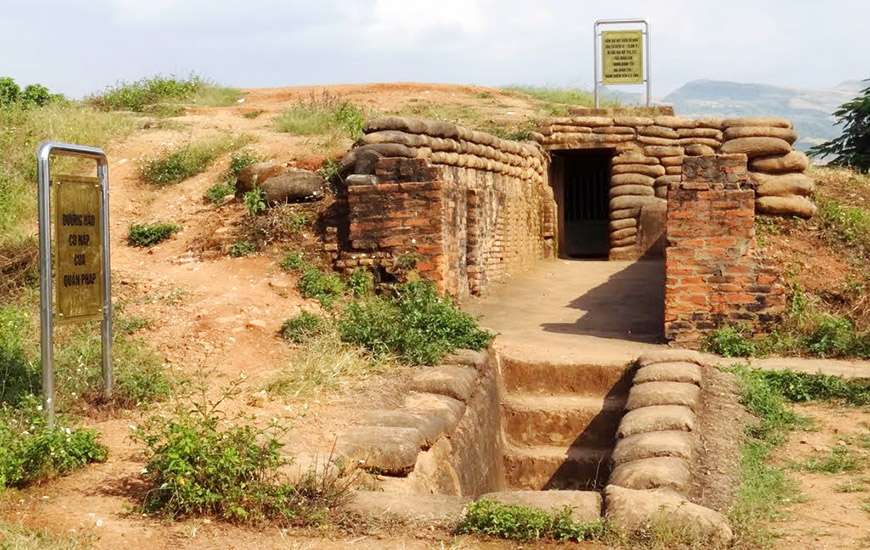 A tunnel on famous A1 Hill, part of the Battle of Dien Bien Phu - Internet
A tunnel on famous A1 Hill, part of the Battle of Dien Bien Phu - InternetThe Hill A1
Then climb Hill A1, the climax of the battles. Here, the atmosphere is full of history. As you contemplate the panorama of the battlefield, you can almost hear the echo of explosions and screams. The remains of trenches and bunkers bear witness to the violence of the clashes. Imagine the soldiers, brave and determined, fighting for every inch of land. Hill A1 is not only a point of view, it is a place of memory, a poignant reminder of the sacrifices made.
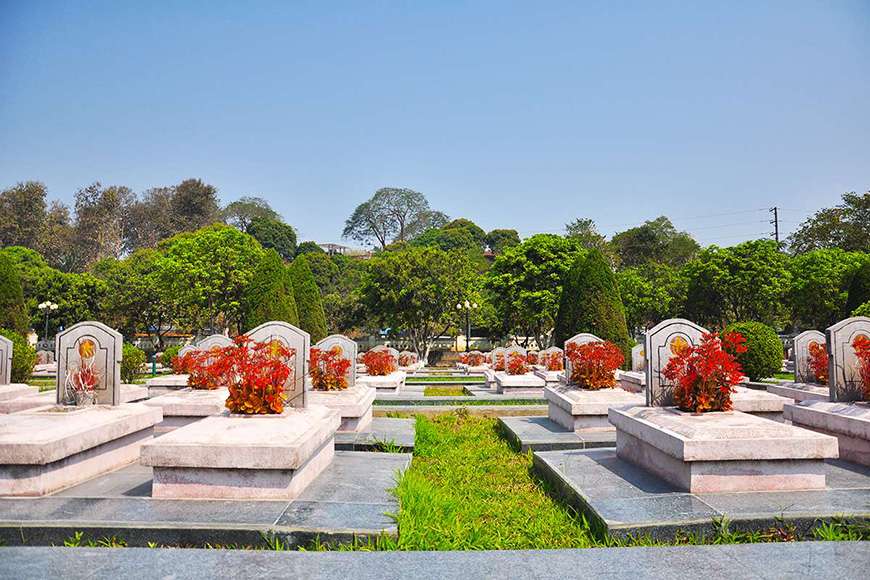 Dien Bien Cemetery, the soldiers’ final resting place - Internet
Dien Bien Cemetery, the soldiers’ final resting place - InternetThe Dien Bien Phu Cemetery
The Dien Bien Phu Cemetery is a place of recollection, respect and gratitude. The rows of graves, lined with moving sobriety, honour the fallen Vietnamese soldiers. Here, the silence is eloquent, and each tombstone tells a story of bravery. Take a moment to soak up the solemn atmosphere and pay tribute to these heroes who have shaped history.
General Giap’s Headquarters
Finally, visit the General Giap Headquarters. This simple and discreet place was the nerve center of Vietnamese strategy. As you explore the command post, you will discover the tactical ingenuity that has foiled the enemy’s plans. Understand how General Giap and his team mobilized resources and led their troops to victory. This is a unique opportunity to dive into the backstage of military planning and grasp the magnitude of the achievement.
 See & Do
See & Do
Beyond the pages of history, Dien Bien Phu reveals itself as a captivating adventure destination, a jewel box of discovery where nature and culture intertwine harmoniously. Away from the beaten track, the region offers a palette of authentic experiences, inviting travellers to a deep immersion in a little-known Vietnam.
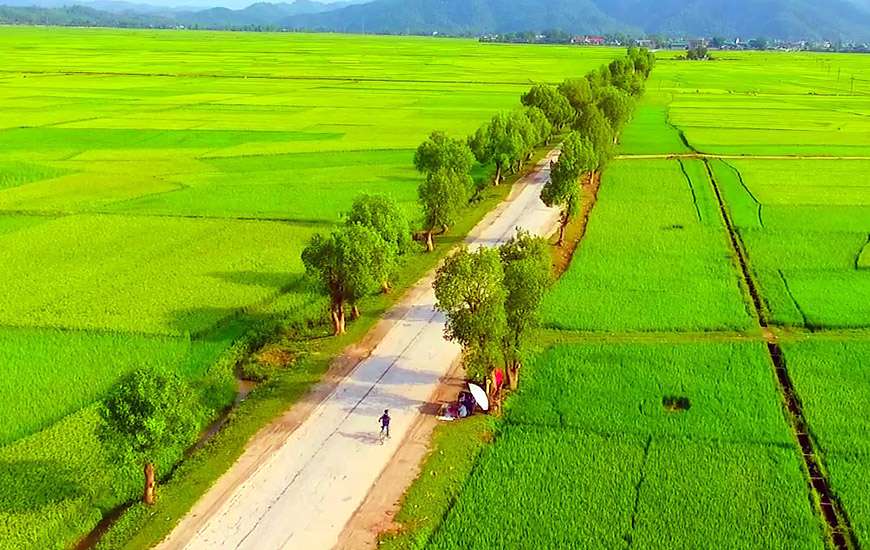 Verdant green Muong Thanh Valley - Internet
Verdant green Muong Thanh Valley - InternetDien Bien Phu, an adventure beyond history
While the name Dien Bien Phu immediately conjures up images of decisive battles, today the region reveals itself in a new light, as a land of adventure and encounters. The surrounding mountains, verdant and mysterious, invite unforgettable hikes. Trails wind through grandiose landscapes, revealing breathtaking panoramas and leading to isolated ethnic villages, where time seems suspended.
Authentic encounters and wild landscapes
The real wealth of Dien Bien Phu lies in its inhabitants, the Thai, Hmong, Dao and many other communities, who perpetuate age-old traditions. Sharing a meal, taking part in a ceremony, exchanging a few words - these simple moments become precious memories, windows onto unique cultures. The local markets, veritable scenes of life, offer a colorful and vibrant spectacle. The stalls are brimming with fresh produce, local crafts and exotic flavours, an invitation to a gustatory and sensory voyage.
For adventurous souls, exploring the region's caves and forests promises moments of escape and communion with nature. The unsuspected depths of the caves reveal hidden landscapes, while the lush forests offer a peaceful refuge from the hustle and bustle of the world. Every step is a discovery, every encounter a story to tell.
 Go Green
Go Green
Mr Linh's Adventures offers tailor-made tours in the Dien Bien region, designed for travelers seeking authenticity and adventure.
Our tours emphasize:
Cultural immersion: Encounters with local communities, participation in traditional activities, discovery of customs and ways of life.
Off-the-beaten-path adventure: Treks, hikes, explorations in the heart of nature, for an authentic and unforgettable experience.
Sharing and conviviality: Small groups, passionate local guides, to encourage exchanges and encounters.
 Heritage
Heritage
Diên Biên Phủ is a place deeply marked by history, notably by the emblematic battle of 1954 that sealed the end of French presence in Indochina. Nestled in the heart of a grandiose landscape, between majestic mountains and villages inhabited by ethnic minorities, it is difficult to imagine that this peaceful place was once the theater of a battle of incredible violence, which lasted 57 days.
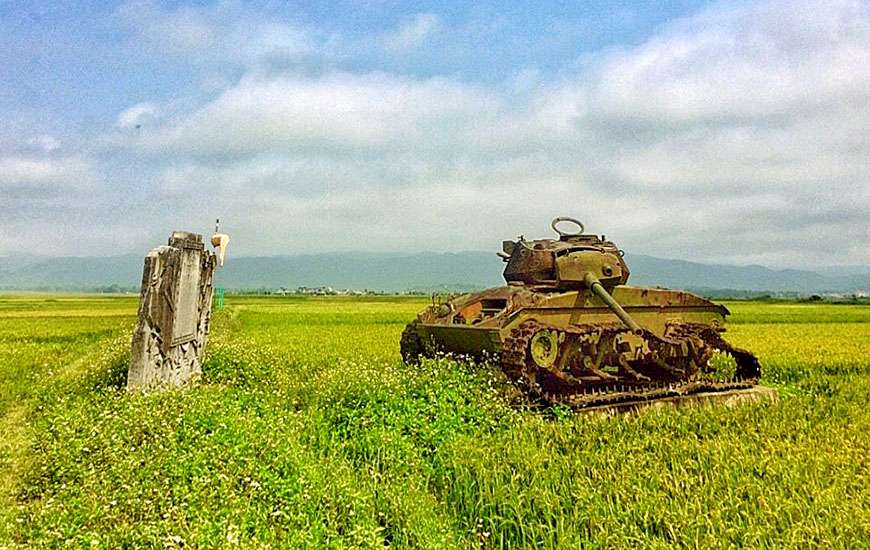 A 60 year old French tank in Muong Thanh Valley - Internet
A 60 year old French tank in Muong Thanh Valley - Internet
The clash between French forces and the Việt Minh began in March 1954 and ended two months later, in May. The French army had established a fortified position at Diên Biên Phủ with the aim of stemming the Việt Minh's advance towards Laos. This strategy, however, proved disastrous. Under the command of General Võ Nguyên Giáp, the Việt Minh fighters deployed a force and determination that the French had not anticipated. They managed to take control of all French strongholds in Diên Biên Phủ. This decisive victory was a major turning point, paving the way for the Geneva Conference which resulted in the division of Vietnam into two zones, North and South, and the definitive withdrawal of French troops from the country.
In addition to the sites related to the battle, the region also boasts a rich culture, with a mosaic of ethnic groups.
Dien Bien Phu is not only a place of historical memory; it is also a crossroads of cultures where several ethnic groups coexist, each with their own traditions, languages, and way of life. This cultural diversity is a major asset for the region and offers visitors an authentic and enriching experience.
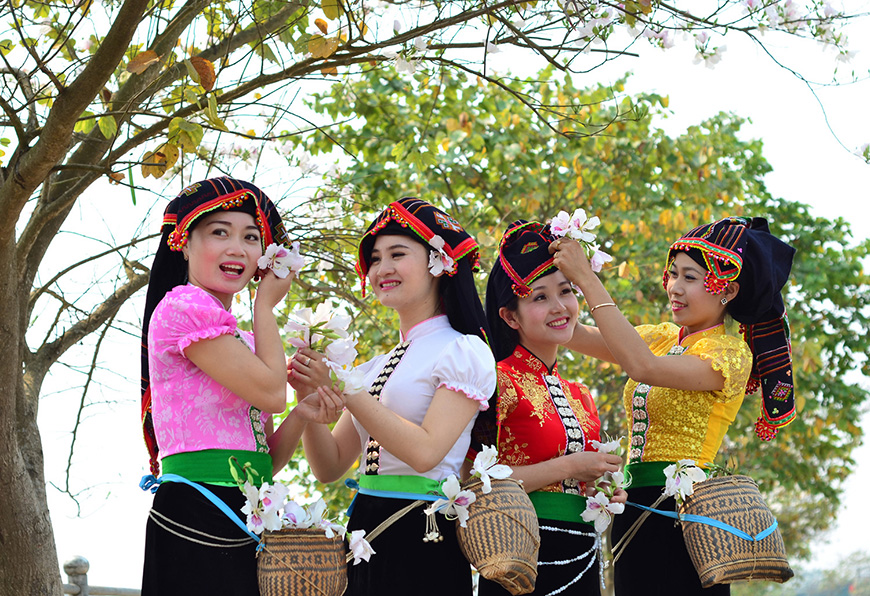 Thai women preparing for the Flower Festival of Dien Bien Phu - Internet
Thai women preparing for the Flower Festival of Dien Bien Phu - InternetThe main ethnic groups present in Dien Bien Phu
The Thai (Black and White): They are the majority ethnic group in the region. There is a distinction between the Black Thai (Thai Dam) and the White Thai (Thai Khao), who differ in their traditional costumes and certain cultural practices. The Thai are known for their hospitality, their crafts (weaving, basketry), and their traditional dances. Their villages, often located in green valleys, offer a glimpse of their rural way of life. Black Thai women are recognizable by their dark headdresses and high chignons.
The Hmong: Originating from the mountains of northern Vietnam, the Hmong are present in the Dien Bien Phu region. They are renowned for their expertise in agriculture, especially corn and rice cultivation, as well as for their textile crafts (embroidery, traditional clothing). The White Hmong wear clothes adorned with red pompoms.
The Dao: Also present in the mountainous areas, the Dao are distinguished by their colorful costumes, their intricate embroidery, and their ancestral traditions. They are also known for their knowledge of traditional medicine.
Cong and Si La: These two ethnic groups are less known and have a limited number of members. They live in difficult conditions and face significant socio-economic challenges.
The Ha Nhi: Although more present in other regions, it is possible to encounter members of this ethnic group in Dien Bien Phu.
 Food & Drinks
Food & Drinks
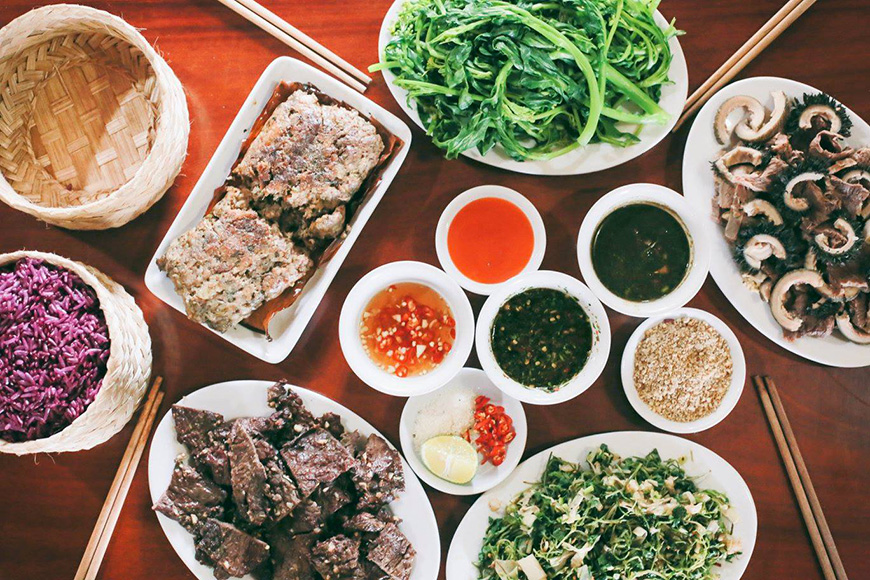 Dien Bien Phu's Cuisine - Internet
Dien Bien Phu's Cuisine - Internet
Dien Bien Phu's cuisine, a tapestry woven from its fertile land and diverse heritage, offers a symphony of unique flavors. Indulge in these regional delicacies:
Smoked Buffalo (Thịt trâu gác bếp): A savory, spiced, and slowly smoked delicacy, perfect with local rice wine.
Mắc Khén Grilled Chicken (Gà nướng mắc khén): Aromatic chicken marinated in the distinctive mắc khén spice and grilled over embers.
Banana Leaf Grilled Fish (Pa Pỉnh Tộp): Fragrant freshwater fish, infused with local herbs and grilled to perfection.
Mountain Sticky Rice (Xôi nếp nương Điện Biên): Soft, aromatic rice from mountain terraces, a staple accompaniment.
Dien Bien Rice Cake (Bánh Dày Điện Biên): A traditional pounded rice cake, simple or filled, often enjoyed during celebrations.
Chẩm chéo Spice Blend: A vibrant local condiment, a secret blend of spices enhancing numerous dishes.
 Directions
Directions
Location
Dien Bien Phu is located in Dien Bien province, in northwestern Vietnam.
How to get there from Hanoi
You can take a direct flight from Noi Bai Airport (Hanoi) to Dien Bien Phu Airport. Ticket prices vary depending on the season and the airline. Night buses are also available, but the journey is long (about 12 to 14 hours).
Best season
The dry season (from October to April) is the ideal time to visit Dien Bien Phu, with pleasant temperatures and little rain.
Dien Bien Phu is a unique destination, where history, culture, and adventure meet. Mr. Linh's Adventures invites you to discover this fascinating region through authentic and personalized tours. Come and live an unforgettable experience, rich in discoveries and sharing.